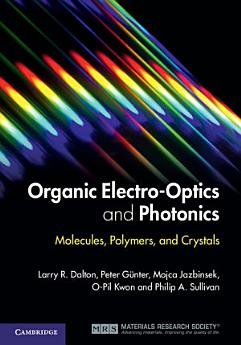Organic Electro-Optics and Photonics: Molecules, Polymers, and Crystals
About this ebook
About the author
Larry R. Dalton is the Founding Director of the National Science Foundation Science and Technology Center on Materials and Devices for Information Technology Research, Director of the DARPA MORPH program, and Director of two Department of Defense MURI Centers. He received the American Chemical Society Award in the Chemistry of Materials, and the IEEE/LEOS William Streifer Scientific Achievement Award. He is a Fellow of the American Chemical Society, the Materials Research Society, the Optical Society of America, the SPIE, and the American Association for the Advancement of Science.
Peter Günter is Emeritus Professor at the Swiss Federal Institute of Technology (ETH) and a member of the board of Rainbow Photonics Ltd in Zürich. His main research interests include electro-optics and integrated optics, nonlinear optics, ferroelectric and polar organic materials as well as THz photonics. He has written and edited ten books on photorefractive phenomena, laser-induced dynamic gratings and organic nonlinear optics, and is a fellow of the Optical Society of America.
Mojca Jazbinsek is a member of the ETH spin-out, Rainbow Photonics AG. At Rainbow Photonics she is currently working on applied research projects on organic nonlinear optical materials for high-speed electro-optics and THz-wave generation. Her research interests include novel organic electro-optically active materials with enhanced stability and their integration into photonic circuits, and novel infrared photosensitive materials for light processing, phase conjugation, spatial and spectral beam manipulation.
O-Pil Kwon is associate professor at the Department of Molecular Science and Technology and the Department of Applied Chemistry and Biological Engineering at the Ajou University in South Korea. His research interests include organic functional materials and supramolecular ordered materials for electro-optic, terahertz wave and electronic applications.
Philip A. Sullivan is Assistant Research Professor in the Department of Chemistry and Biochemistry at Montana State University. He currently pursues research toward the development of novel organic photonic materials for biophotonics applications, nonlinear optical metamaterials and structured optical nanomaterials. He has worked in the area of organic materials for photonics applications for over ten years.




